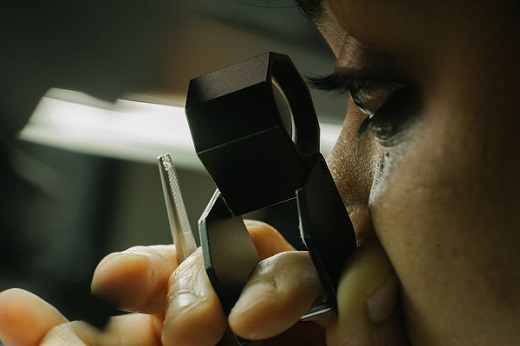|
|
In Search of a Plan at the World Diamond Congress
Insights
Oct 5, 2020 9:30 AM
By Avi Krawitz
|
|
|

RAPAPORT... The Zoom meetings that constituted September’s World Diamond Congress lacked the event’s trademark pizzazz. The biennial conference, which combines the meetings of the World Federation of Diamond Bourses (WFDB) and the International Diamond Manufacturers Association (IDMA), usually involves a lot of cumbersome organizational housekeeping. But it also provides an opportunity to network and showcase the industry’s achievements. For the leadership, it’s a chance to outline the challenges facing the trade and — we assume — strategize for the future as well.
Covid-19 forced the 2020 congress to take place in a virtual format on September 15 to September 16. It also brought a sense of urgency to the discussions, with heightened expectations that the leadership would emerge with a clear plan to navigate this most difficult of crises.
All things considered, the three webinars that were open to the public as part of the congress program were disappointing. They didn’t impart the sense of occasion that others have been able to achieve on Zoom. And the keynote presentations — on the Get Diamonds trading platform, the World Diamond Council’s System of Warranties, and the Natural Diamond Council’s new advertising campaign — were given out of context.
With no explanation of why these important topics were part of the program, they stood in isolation. The organizers assumed the audience understood how they tied into the agenda of the closed meetings of the WFDB and IDMA, implying that the wider industry was privy to that agenda. We were not.
The respective organizations assured us that their meetings were productive, but they did not provide details. That left a feeling that they had missed an opportunity to convey their overarching strategy to the industry, or at least to a few trade journalists who could express it on their behalf.
IDMA provided Rapaport with that chance in a briefing with its president, Ronnie VanderLinden, and honorary past president Jeffrey Fischer. The group also gave feedback in its weekly newsletter, with a promise of more details to come.
The WFDB did not reply to our request for an interview or an agenda. The umbrella organization for global diamond exchanges counts the expansion of Get Diamonds among its successes during the pandemic. Arguably, the continued enthusiasm of its Young Diamantaires group is its more encouraging achievement.
Much of the discussion at this year’s IDMA meetings has centered around how to help its members interact with other industry stakeholders. Manufacturers’ relationships with miners have come under the most scrutiny in that area, and VanderLinden and Fischer praised both sectors for drastically reducing supply as the pandemic spread.
They called on the mining companies to continue showing “responsible restraint,” even with the resurgence the trade has seen in rough buying since August. “Supply [only] rough that the market demands,” the executives urged.
Indeed, polished demand has become selective, with business during the pandemic focused on certified single stones that can be bought remotely, since travel is limited. In the long term, manufacturers are also concerned that pressure to disclose the provenance of their diamond supply will further segment the market.
Some believe this trend is being pushed upon them by members of the industry, rather than resulting from consumer demand. They are also skeptical as to whether retailers will pay a premium for an origin story, and question what will happen to goods for which showing provenance is not an option — such as small diamonds, or those already in traders’ or consumers’ hands.
Tellingly, synthetics and bank financing, which are usually the hot-button topics at IDMA meetings, took a back seat. That may be because lab-grown has become more widely accepted and because there is not a lot of pressure from banks at present.
The latter reflects a reduced need for money rather than a friendlier attitude from lenders, VanderLinden and Fischer suggested. Manufacturers have spent significantly less on rough this year, and the release of pent-up demand will hopefully help people make some money over the holiday season, the IDMA presidents explained.
Beyond that, the long-term challenge for the trade is to align supply and demand in the midstream while stimulating sales to consumers. That will indeed take an industry-wide effort, building on the unity the trade has shown at various times during the pandemic. But with all the noise around Covid-19 and other industry challenges still prevalent, effective strategic thinking from the WFDB and IDMA will be necessary to inspire that solidarity.
The World Diamond Congress was an opportunity to energize the trade with a clear message and a plan. Without it, the audience was left wondering why we logged on.
This article first appeared in the October issue of Rapaport Magazine.
Image: A grader checks the color of a diamond at De Beers Group Industry Services lab in Surat, India. (De Beers)
|
|
|
|
|
|
|
|
|
|
Tags:
Avi Krawitz, diamonds, IDMA, WFDB, World Diamond Congress
|
|
|
|
|
|
|
|
|
|
|

|
|